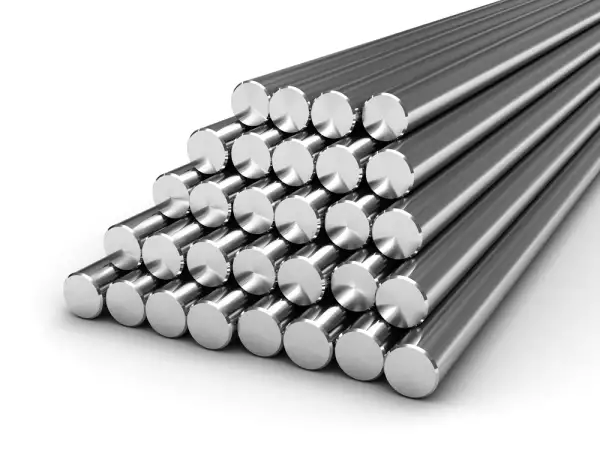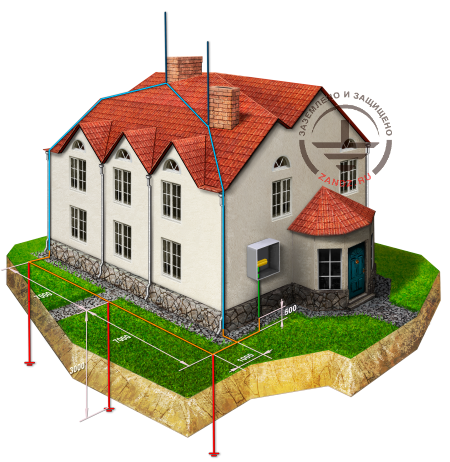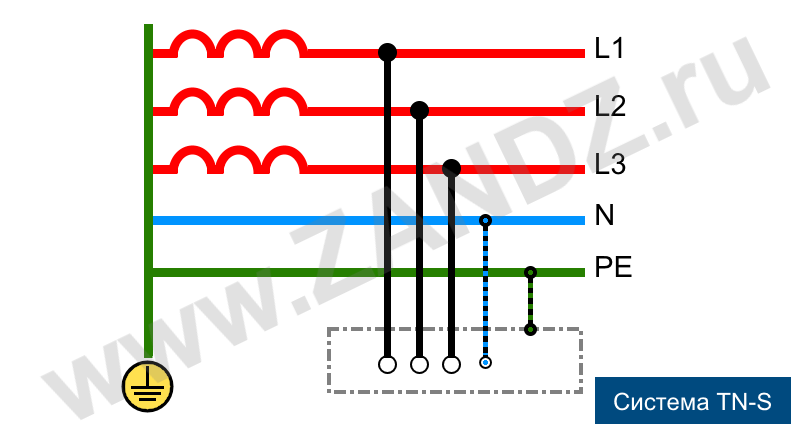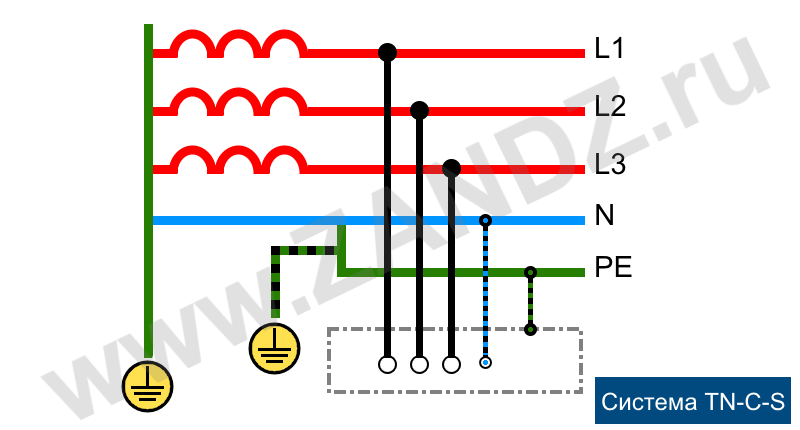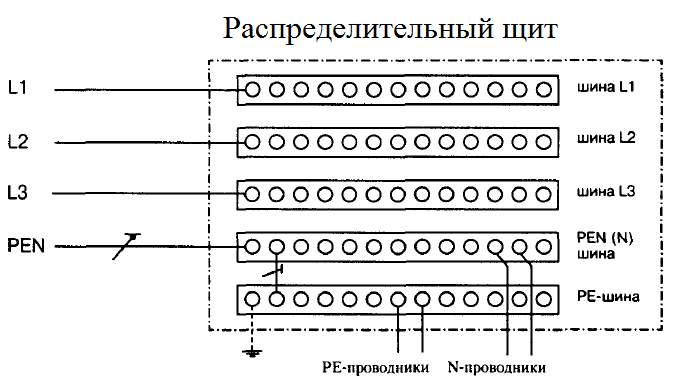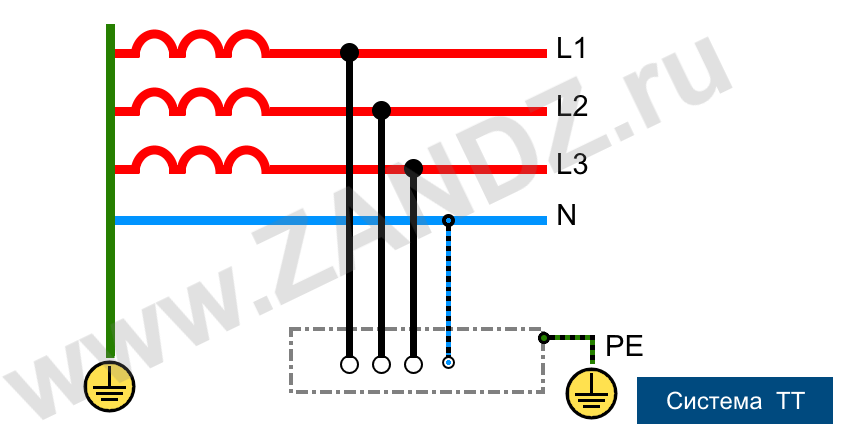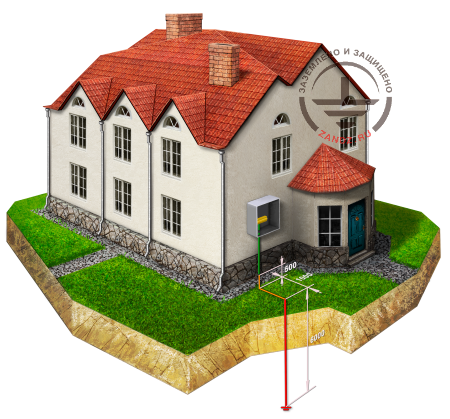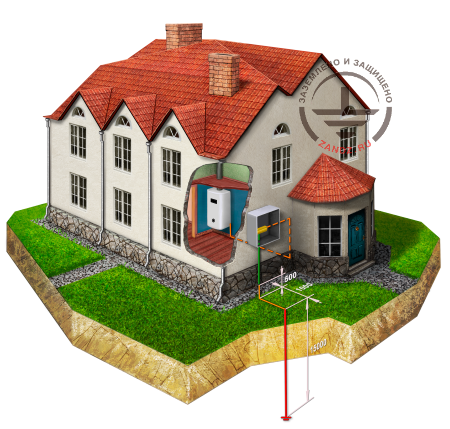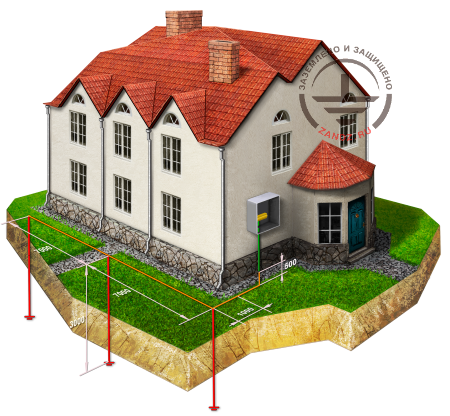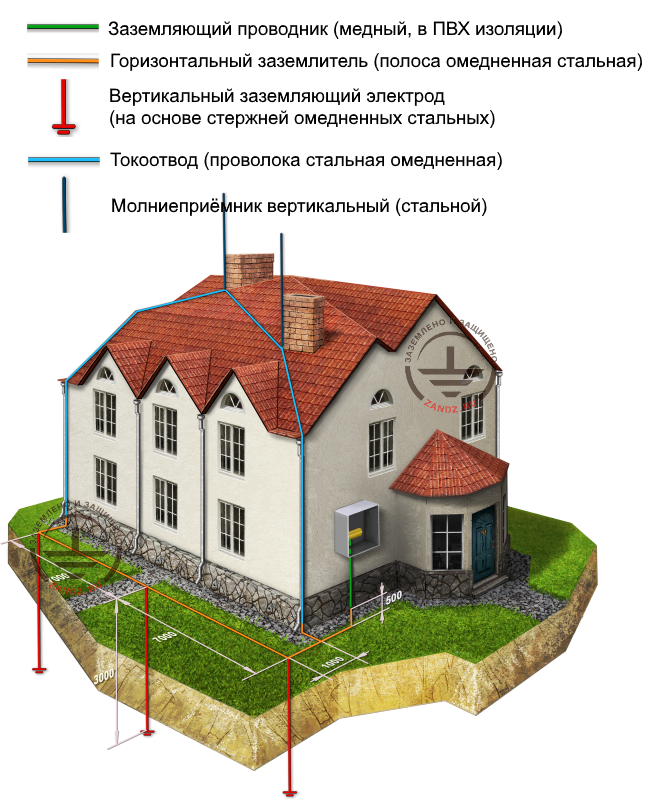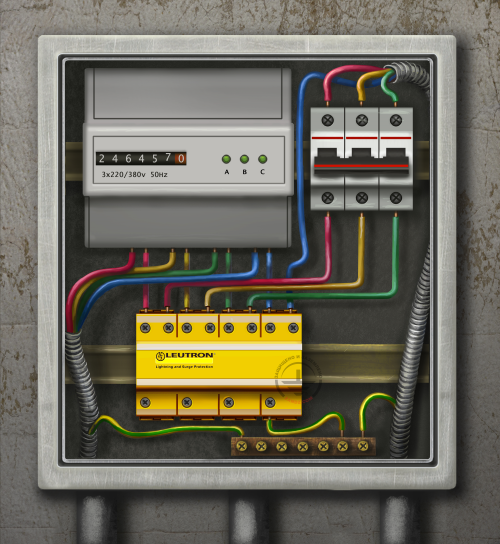Dear readers! The instruction manual is voluminous, therefore, specially for your convenience, we made navigation through its sections (see below). If you have questions about selection, calculation and design of grounding and lightning protection systems, please write or call ZANDZ.ru technical specialists, they will help you with pleasure!
|
Quick navigation: |
The house has just been built or bought - in front of you there is the cherished home that you have recently seen on a sketch or photo in the ad. Or maybe you've been living in your own house for years, and every corner in it became darling. It is wonderful to have your own house, but along with the sense of freedom, in addition you get a number of responsibilities. And now we won't talk about household chores, we will talk about such a need as grounding for a single-family house. Any private house includes the following systems: electric network, water and sewerage, gas or electric heating system. Additionally, a security and alarm system, ventilation, a smart house system, etc. are installed. Thanks to these elements, the private house becomes a comfortable environment for the life of a modern man. But it really comes to life thanks to the electrical energy that drives the equipment of all the above systems.
Necessity of grounding
Unfortunately, electricity also has a downside. All equipment has its service life, each device has a certain reliability, so they will not work forever. In addition, when designing or installing the house itself, electrical appliances, communications or equipment, there msay appear errors which can affect electrical safety. For these reasons, some of the electrical network may be damaged. The nature of the accidents can be different: short circuits, which are cut off by circuit breakers, may happen and there may be breakdowns to the body frame. The difficulty is that the problem of the breakdown is hidden. There was a damage to the wiring, so the body of the electric cooker under voltage. With incorrect grounding measures, the damage does not manifest itself until the person touches the cooker and receives an electric shock. Electric shock will happen due to the fact that the current is looking for a way into the ground, and the only suitable conductor is the human body. You must not allow this.
Such damages represent the greatest threat to the safety of people, because for their early detection, and therefore to protect themselves from them, you must necessarily have grounding. Within the frames of this article, it is considered what actions should be taken to organize grounding for a private house or a country house.
The need for grounding in a private house is determined by the grounding system, i.e. neutral mode of the power source and the way of laying the zero protective (PE) and zero working (N) conductors. Also, the type of supply network-an overhead or cable line-can be important. The structural differences in grounding systems make it possible to distinguish three variants of power supply for a single-family house:
TN-S system.
TN-S grounding system
The main equipotential bonding system (MEBS) connects all the major current-carrying parts of the building that have no electric potential under normal conditions into a single contour with the main grounding bus. Let's examine the graphic representation of bonding in the electric installation of a residential home.
At first, let's consider the most progressive approach to electrical power at home - the TN-S system. In this system, PE and N conductors are separated along the entire length, and there is no need for the user to install grounding. It is only necessary to make the PE conductor on the main grounding bus, and then spread the ground conductors to the electrical appliances. This system is implemented as a cable, as an air line, in the case of the latter, isolated overhead line is made with the help of self-supporting wires (SSW).
But not everybody have this happiness, because the old overhead lines use the old grounding system - TN-C. What is its feature? In this case, PE and N are laid along the entire length of the line by a single conductor, in which the functions of the zero protective and zero working conductors, the so-called PEN conductor, are combined. If earlier it was allowed to use such a system, then with the introduction of point 1.7.80 into the EIC of the 7th edition in 2002, the use of the RCD in the TN-C system was prohibited. Without using RCD, there can be no talk of any electrical safety. The RCD turns off power when the insulation is damaged, as soon as it has occurred, and not at the moment when the person touches the emergency device. To meet all the necessary requirements, the TN-C system needs to be upgraded to TN-C-S.
TN-C-S system.
TN-C-S grounding system
In the TN-C-S system, a PEN conductor is also laid along the line. But, now, point 1.7.102 of the EIC 7 ed. says that repeated grounding of the PEN conductor must be performed at the HV line inputs to the electrical installations. They are, as a rule, performed at the electric pole from which the input is made. At the repeated grounding, the PEN-conductor is divided into separate PE and N, which are put into the house. The rate of repeated grounding is contained in paragraph 1.7.103 of the EIC 7 ed. and is 30 ohms, or 10 ohms (if there is a gas boiler in the house). If the grounding at the post is not organized, it is necessary to contact Energosbyt, which takes care about this electric pole, a switchboard and an input to the consumer's house, and tell about the violation that must be rectified. If the switchboard is in the house, the separation of the PEN must be carried out in this shield, and the repeated grounding should be done near the house.
Switchboard layout
- Распределительный щит – distribution board
- Шина - bus
- Проводник - conductor
In this form, TN-C-S is successfully operated, but with some reservations:
- if the condition of the HV line causes serious concerns: the old wires are not in the best condition, because of which there is a risk of a conductor break or burn-out of the PEN conductor. This is fraught with the there will be increased voltage on the grounded bodies of electrical appliances, because the path of current into the line through the working zero will interrupt and the current will return from the bus on which the separation was performed, through the zero protective conductor to the body of the device;
- if there are no repeated groundings on the line, there is a danger that the fault current will flow into a single repeated grounding, which will also lead to an increase in the voltage on the body frame.
In both cases, electrical safety leaves much to be desired. The solution to these problems is the TT system.
TT system
In the TT system, the PEN conductor of the line is used as a working zero, and the individual grounding, which can be installed near the house, is carried out individually. Item 1.7.59 of the EIC 7 ed. stipulates the case where it is impossible to provide electrical safety, and allows the use of the TT system. The RCD must be installed and its correct operation must be ensured by the condition Rа * Iа <= 50 V (where Iа is the protective device tripping current, Ra is the total resistance of the ground electrode). "Instruction on protective grounding device" 1.03-08 specifies that in order to comply with this condition, the resistance of the grounding device should not be more than 30 Ohm, and in soils with a high resistivity - no more than 300 Ohm.
TT grounding system
How to make grounding of a house?
The purpose of grounding for a private house is to obtain the required grounding resistance. For this, vertical and horizontal electrodes are used, which together should provide the necessary current spreading. Vertical ground electrodes are suitable for installation in soft soils, whereas in rocky soils their burial is connected with great difficulties. In this soil, horizontal electrodes are suitable.
Protective grounding and grounding of lightning protection are carried out in common, one ground electrodes will be universal and fulfill both functions, this is stated in clause 1.7.55 of the EIC 7 ed. Therefore, it will be useful to learn how to unify lightning protection and grounding. To visually see the process of installing these systems, the description of the grounding process for a private house will be divided into stages.
Stage 1. Installation of protective grounding
Protective grounding in the TN-S system will be a separate point. The starting point for the installation of grounding is the type of power system. The differences in power supply systems were discussed in the previous paragraph, so we know that for the TN-S system it is not necessary to mount grounding, the zero protective (grounding) conductor comes from the line - it only needs to be connected to the main grounding bus and the house will have grounding. But you can not say that the house does not need lightning protection. So it's only that we, without paying attention to stages 1 and 2, can immediately go to steps 3-5, see below.
TN-C and TT systems always require grounding, so let's move on to the most important thing.
Protective grounding is installed at the pole, or at the wall of the house, depending on where the separation of the PEN conductor is performed. It is advisable to locate the ground electrode in the immediate vicinity of the main grounding bus. The only difference between TN-C and TT is that in TN-C the grounding place is tied to the separation point of the PEN conductor. Resistance of grounding in both cases should not be more than 30 Ohm in the ground with a resistivity of 100 Ohm * m, for example loam, and 300 Ohm in the ground with a resistivity of more than 1000 Ohm * m. The values are the same, although we rely on different standards: for the TN-C system 1.7.103, the EIC 7 ed., and for the TT system, on point 1.7.59 EIC and 3.4.8. Instruction manuals and 1.03-08. Since there are no differences in the necessary measures, we will consider the general solutions for these two systems.
It is enough to hammer a six-meter vertical electrode for grounding.
Grounding for a house (one vertical electrode 6 meters deep)
(click to enlarge)
This grounding turns out to be very compact, it can be installed even in the basement, no normative documents contradict it. Necessary grounding actions are described for soft ground with the resistivity of 100 Ω * m. If the ground has a higher resistance, additional calculations are required, refer to ZANDZ.ru technical specialists for help in calculating and selecting materials.
Stage 2. Grounding of a gas boiler
If a gas boiler is installed in the house, then the gas service may require grounding with the resistance of not more than 10 Ohm, guided by paragraph 1.7.103 EIC 7th edition. This requirement should be reflected in the gasification project.
Then to achieve the norm, you need to install a 15-meter vertical ground electrode, which is installed in one point.
Grounding for a gas boiler in the house (one vertical electrode with a depth of 15 meters)
It can also be installed in several points, for example, two or three, then connected by a horizontal electrode in the form of a tape along the wall of the house at the distance of 1 m and at the depth of 0.5-0.7 m. Installation of a grounding device at several points will also serve for the purpose of lightning protection, in order to understand how, we proceed to consider it.
Stage 3. Grounding for lightning protection
Before mounting grounding, you must immediately decide whether the protection of the house from lightning will be performed. So, if the ground electrode configuration for protective grounding can be any, then grounding for lightning protection must be of a certain type. At least 2 vertical electrodes with the length of 3 meters are installed, they are combined with a horizontal electrode of such a length that between the rods there is not less than 5 meters. This requirement is contained in paragraph 2.26 AD 34.21.122-87. Such a grounding must be mounted along one of the walls of the house, it will be a kind of connection in the ground of two down conductors lowered from the roof. If there are several down conductors, the right solution is to lay a grounding contour for a house at the distance of 1 m from the walls at the depth of 0.5-0.7 m, and a vertical electrode 3 m long must be installed at the connection point with the down conductor.
Grounding for lightning protection of a house
Now it's time to learn how to make lightning protection for a single-family house. It consists of two parts: external and internal.
Stage 4. External lightning protection
Is carried out in accordance with IS 153-34.21.122-2003 "Instructions for lightning protection of buildings, structures and industrial communications" (hereinafter IS) and AD 34.21.122-87 "Instructions for lightning protection of buildings and structures" (hereinafter AD).
Protection of buildings against lightning strikes is carried out by lightning rods. A lightning rod presents itself a device rising above the protected facility to divert the lightning current into the ground without entering the protected facility. It consists of a lightning rod directly perceiving the lightning discharge, down conductor and ground electrode system.
Lightning conductors are installed on the roof in such a way that the reliability of protection is more than 0.9 according to the IS, i.e. the probability of a breakthrough through the lightning receiving system should be not more than 10%. For more information on what security is, see "Lightning protection of a private house". As a rule, they are installed along the edges of the roof ridge, if the roof is gable. When the roof is mansarded, hipped or even of a more complex shape, the lightning rods can be fixed to the chimneys.
All lightning rods are connected to each other by down conductors, the descents of down conductors are performed to the grounding device, which we already have.
External lightning protection of a house (two vertical lightning rods)
The installation of all these elements will ensure the protection of the house from lightning, or rather from the danger that its direct strike carries.
Stage 5. Internal lightning protection
Protection of the house against overvoltage is performed by means of an SPD. For their installation, grounding is necessary, because the current is drained into the ground with the help of zero protective conductors attached to the contacts of these devices. The installation options depend on the presence or absence of external lightning protection.
- There is external lightning protection In such a case, a classical protective cascade made of the devices of classes 1, 2 and 3 places subsequently, is installed. The SPD of class 1 is mounted at the input and limits the current of the direct lightning strike. SPD of class 2 is installed either in the input shield or in the distribution board if the house is large and the distance between the shields is more than 10 m. It is designed to protect against induced overvoltages, it limits them to the level of 2500 V. If there is sensitive electronics in the house, It is desirable to install SPD of class 3, which limits overvoltages to the level of 1500 V, the majority of devices can withstand such a voltage. SPD of class 3 is installed directly at such devices.
- External lightning protection is absent Direct lightning strike into a house is not taken into account, therefore there is no need for an SPD of class 1. The remaining SPDs are installed in the same way as described in step 1. Selection of the SPD also depends on the grounding system to be sure that the choice is correct, ask ZANDZ.ru technical specialists for help.
The figure shows a house with the installed protective grounding, an external lightning protection system and a combined SPD of class 1+2+3, intended for the installation in a TT system.
- Заземляющий проводник (медный, в ПВХ изоляции) – grounding conductor (copper, in PVC insulation)
- Горизонтальный заземлитель (полоса омедненная стальная) – horizontal ground electrode ( copper bonded steel tape)
- Вертикальный заземляющий электрод (на основе стержней омедненных стальных) – vertical ground electrode (on the base of copper-bonded steel rods)
- Токоотвод (проволока стальная омедненная) – down conductor (copper bonded steel wire)
- Молниеприемник вертикальный (стальной) – vertical lightning rod (steel)
Example of complex home protection: protective grounding, external lightning protection system
and a combined SPD of class 1+2+3, designed for the installation in a TT system
(click to enlarge)
Enlarged image of a shield with an installed SPD for a house
List of equipment for grounding and lightning protection:
|
Grounding device |
||||
The table takes into account the device for protection against impulse overvoltage (SPD) of the combined class type 1+2+3 for the TT system. The choice of the appropriate SPD model depends on the grounding system and other factors that were taken into account in the example. To be sure of the correct choice, ask ZANDZ.ru technical specialists for help.
Stage 6. Grounding resistance measuring
After installing the grounding system, it is necessary to take measurements and obtain a resistance measurement protocol. The right to register and issue a record is available to the specialists of the electrotechnical laboratory registered in Rostekhnadzor. You can find authorized specialists in our Club of Experts, which operates throughout Russia.
The protocol is needed to receive gas equipment in operation, for gas service this will be a confirmation that the grounding corresponds to the norm of 10 Ohm. The protocol will be necessary to be sure that the electrical safety of the private house is ensured. Compliance with the requirements of the standards will guarantee the safe operation of the electrical system.
After considering the necessary measures step by step, you already know what you need to do to provide a single-family house with reliable grounding and lightning protection. If you have any questions while studying the instructions, ask ZANDZ.ru technical specialists. You can entrust us with any stage or design of the whole system as a whole.
Related Articles:
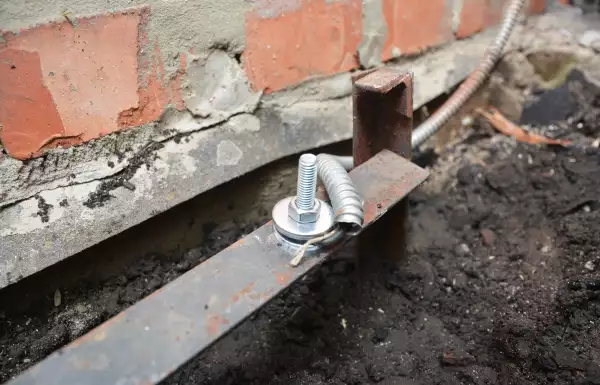 Why Cannot Vertical Earthing Devices Be Installed Close to Each Other?
Why Cannot Vertical Earthing Devices Be Installed Close to Each Other?
 Electrolytic Grounding in Permafrost Soils: Should Vertical of Horizontal Electrodes Be Used?
Electrolytic Grounding in Permafrost Soils: Should Vertical of Horizontal Electrodes Be Used?

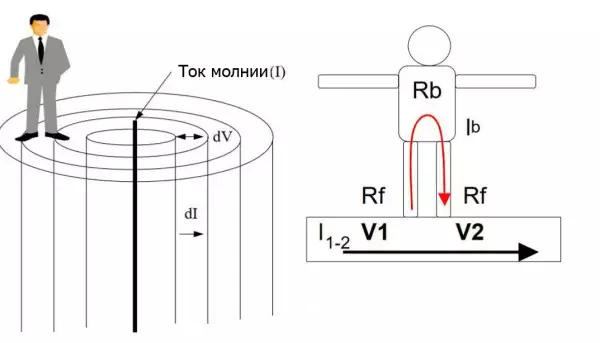 Step Voltage: Dangerous Obscurity and Reliable Protection
Step Voltage: Dangerous Obscurity and Reliable Protection
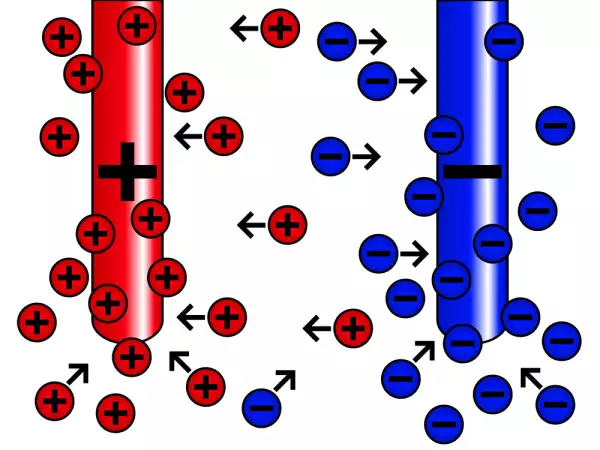 Nature of Electrochemical Corrosion
Nature of Electrochemical Corrosion
 Public Safety in Land Transport in case of Direct Lightning Strike
Public Safety in Land Transport in case of Direct Lightning Strike
